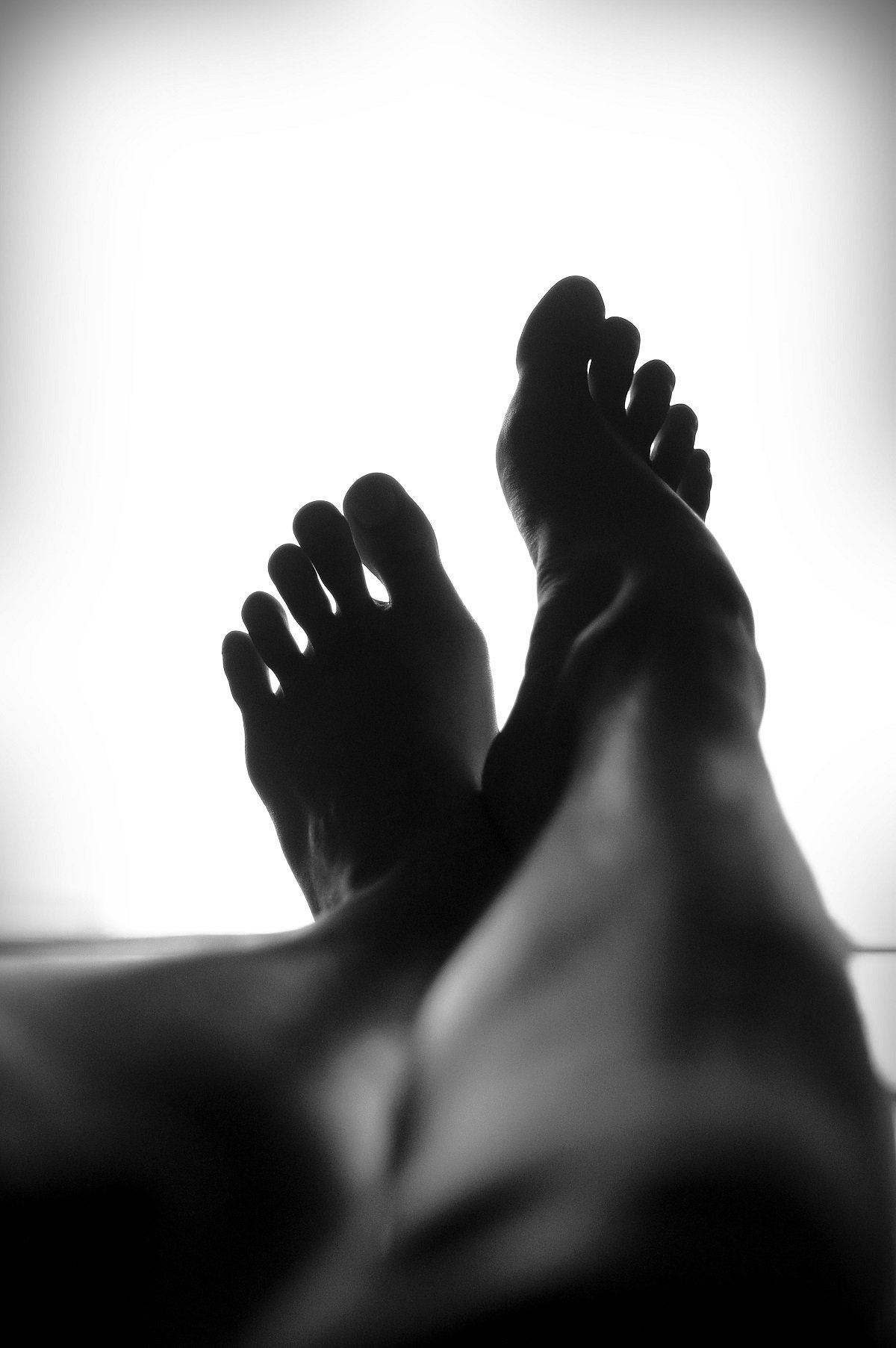
There is often some confusion surrounding the differences between orthopedists and podiatrists. Although they both specialize in ailments of the feet, they’re not exactly the same thing.
A podiatrist specializes in all things foot and ankle, while an orthopedist treats the bones, muscles, and ligaments within the foot, ankle, and legs—as well as the rest of the body.
Because our feet are the foundation of our bodies, taking proper care of our feet is often symbiotic with the health of our knees, hips, and back. So, when it comes to matters of the foot, it’s a lot like Cinderella’s slipper—you want to find the right fit. It’s really no different when you’re trying to find a comfortable pair of shoes. Whether it be stylish shoes for men or work shoes for women, you want to find the right support for your feet and a podiatrist or orthopedist can often recommend the right ones.
In this blog, we’ll cover everything you need to know about the differences between orthopedists and podiatrists, and how to identify which doctor can provide the best treatment for you.
What is a Podiatrist?
Imagine you’re playing the game of Operation, and you’ve been tasked with fixing the wretched ankle. Who’s the surgeon you’ll want to call if you can’t keep your patient’s nose from glaring bright red and rattling the contents of the game board? A podiatrist.
Podiatrists are doctors of podiatric medicine (DPM) whose education focuses, in large part, on the lower extremities of the body—the ankles and feet.
These types of doctors know their way around all 26 bones, 30 joints, and 100-plus muscles, ligaments, and tendons in the foot like the back of their proverbial hand.
Beyond their highly specific knowledge of the lower legs, ankles, and feet, podiatrists may choose to narrow their focus even further by specializing in fields such as podiatric surgery, public health, sports medicine, geriatrics, or radiology.
Some of the most common injuries and illnesses podiatrists may treat are:
- Ankle sprain and/or feet or ankle fractures
- Arthritis in the feet and lower legs
- Ingrown toenails and fungal infections
- Achilles tendonitis
- Plantar fasciitis
- Nerve-related damage in your legs and feet as a result of diabetes foot conditions
- Bunions, hammertoes, and claw toes
What Kind of Education and Training Does a Podiatrist Receive?
As with many other doctoral degrees, education and training for doctors of podiatric medicine are extensive. After completing four years of undergraduate study in a qualifying field, candidates must then apply to an accredited podiatric medical college. Once accepted, students will participate in four years of continued study with focuses on pharmacology, podiatric pathology, lower extremity anatomy, and more.
A minimum two-year residency is required for all graduates of podiatric medical school in which podiatrists explore and gain additional hands-on experience in surgery, pediatrics, or anesthesiology. A podiatric physician can be found working in a variety of medical environments, including:
- Hospitals and extended care facilities
- Private and group practices
- Municipal health departments
- Armed forces
What is an Orthopedist?
Unlike podiatrists, who possess specialized knowledge of the bones, joints, and muscles of the feet and ankles, orthopedists are experts in the body’s musculoskeletal system as a whole.
Whether you’re experiencing joint pain in an elbow or you’re suffering from a sports injury in your knee, orthopedists can assess your condition and provide treatment no matter what part of your body has been affected.
Orthopedists are commonly known as orthopaedic surgeons, but it’s important to note that not all orthopedic doctors are surgeons. Though many orthopedists may choose to focus their practice on foot surgery, several others specialize in both prevention and minimally invasive treatment plans that may not involve operations of any kind.
However, the orthopedic doctor and orthopedic surgeon are trained to treat a number of ailments, including:
- Osteoporosis
- Carpal tunnel
- Hip dysplasia
- Spinal stenosis or ruptured discs
- Bone tumors
- Joint pain
- Arthritis
- Plantar fasciitis
- Bunions
- Scoliosis
What Kind of Education and Training Does an Orthopedist Receive?
Aspiring orthopedists must complete four years of undergraduate study in a scientific field, such as biology or chemistry, before continuing on to an additional four years of study at an accredited orthopedic medical school. In addition, as part of their educational track, candidates must complete a residency program that generally lasts five years.
Within their field, an orthopedic specialist may decide to pursue a sub-specialty—oncology, sports medicine, reconstructive surgery, and pediatrics are just a few directions that orthopedists can take.
Once orthopedists have completed all of the necessary educational requirements, they can find work in a number of different settings:
- Hospitals
- Private clinics
- University medical centers
- Specialized practices
What Are the Differences Between Orthopedists and Podiatrists?
Depending on your condition, you may visit with both a podiatrist or orthopedist throughout your assessments, diagnosis, and treatments of your injury or illness.
In some cases, the two may even work side-by-side.
If you’ve been dealing with recurring pain in your hip joint, it’s likely you’ve been seeing an orthopedist. But, if consequently, the joints and bones of your feet become affected, you may be referred to a podiatrist. The reverse could also occur.
You’ll want to identify which type of medical doctor is best for your injury by singling out the difference between a podiatrist and orthopedist:
- Orthopedists have a more comprehensive background and knowledge of the whole body, focusing on diagnosing and treating ailments throughout the entire musculoskeletal system
- Podiatry is focused on the lower extremities, as well as the muscle, bone, and joint injuries that affect the ankles and feet
- Orthopedists undergo a longer residency (five years) than podiatrists (two years)
Although their education and specialties may vary, there are many ways in which the jobs of podiatrists and orthopedists overlap—both can prescribe medication, reset bones, and perform surgery.
So, how do you know which medical doctor is right for your condition? Understand your ailment.
How to Know if You Need a Podiatrist or an Orthopedist
So, how do you know which doctor is right for your condition? Understand your ailment.
When asking yourself, “Do I need a podiatrist or an orthopedist?” do your best to identify where the ache or pain is stemming from—is it isolated to an ankle sprain or is the pain originating from somewhere else in your body?
Generally, if you are able to identify the source of your pain as coming from the foot, ankle, or lower leg, reach out to a podiatrist for an appointment. They have a more acute knowledge of this area of your body and, by knowing when to see a podiatrist, you could save yourself an unnecessary trip to a doctor who would end up referring you to a podiatrist anyway.
On the other hand, if you think your foot pain may be the result of an underlying bone or joint issue elsewhere in your body, an orthopedic doctor may be a good place to start.
Taking care of your feet can be an integral part of maintaining your overall health. Since injuries of the foot can lead to other ailments like back and knee pain, poor posture, or even skin conditions, it’s important to seek out the proper care to prevent an isolated injury from taking its toll on another part of your body.
Tips for Maintaining Overall Foot Health
A visit to the podiatrist or orthopedist may be inevitable after years of sports, exercise, and repeated use, but there are also a number of ways to keep your foot health in check.
So, what can you start doing today to start caring for your feet? Harvard Health suggests:
Keep your feet moisturized
Have you experienced bleeding and uncomfortable cracks as a result of dry feet? Kick the calluses by regularly applying a moisturizing foot lotion after showering each day.
Be mindful of foot hygiene
Keep your toenails trimmed and consider adding a foot exfoliation mask or peel into your routine. Remember: Bacteria can grow in warm, moist places, so make sure you’re taking the time to thoroughly dry your feet after showering.
Participate in routine stretching
There are many interconnected parts that exist within your musculoskeletal system. Keep your feet and their surrounding muscles well-stretched to prevent injury and improve mobility.
Maintain a healthy weight
If possible, try to avoid putting any extra strain on your feet. They have a lot of work to do already—they’re the foundation of your body, after all. Find a healthy weight that’s right for your body type and height, and do your best to maintain your weight to prevent chronic conditions like arthritis and improve circulation in your feet.
Wear proper, supportive footwear
The shoes you wear matter. Don’t settle for a pair of sneakers that don’t check all the boxes—you’ll want to find shoes with arch support, toe cushioning, and enough room to wiggle around, like the styles listed from Vionic.
Taking small, everyday steps toward maintaining overall foot health can improve the foot’s overall function and prevent future injuries.
Maintain Proper Foot Health with Vionic
Foot health is the foundation of whole-body health. As such, it’s important to identify whether a podiatrist or orthopedist will best suit your needs.
It’s also important to consider what you’re putting on your feet while doing so. Whether you’re lounging at home, walking around your neighborhood, or spending time at the beach, wear Vionic.
We factor in style, stability, cushioning, and arch support into each of our shoes and insoles. In fact, our shoes have the American Podiatric Medical Association (APMA) Seal of Acceptance, guaranteeing that you’re getting the support you need.
Shop the Vio-Motion™ Technology collection today, and step into a difference you can feel.
Sources:
- “Anatomy of the Foot”. Arthritis Foundation. https://www.arthritis.org/health-wellness/about-arthritis/where-it-hurts/anatomy-of-the-foot
- “5 ways to keep your feet healthy for better mobility”. Harvard Health Publishing. July 18, 2019, https://www.health.harvard.edu/healthbeat/5-ways-to-keep-your-feet-healthy-for-better-mobility
- “Orthopedic Surgeons: Seven Things You Need to Know”. Penn Medicine. Dec 04, 2019, https://www.pennmedicine.org/updates/blogs/musculoskeletal-and-rheumatology/2019/december/ortho-surgeons-7-things-to-know





Leave a Reply